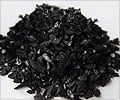Restaurant owners can make their restaurants climate-friendly by highlighting dish components on a menu to lower the carbon footprint of dining.

Menu can Influence Your Food Choices
A study employing hypothetical restaurant menus suggests that climate-friendly default options and labels indicating the carbon footprint of each dish may influence diners’ dish selections and the resulting environmental effects. Ann-Katrin Betz and colleagues at Julius-Maximilians-Universität Würzburg, Germany, present these findings in the open-access journal PLOS Climate.TOP INSIGHT
Diners’ can choose their food wisely if restaurant menus can include both carbon labels and climate-friendly food items as default options.
To broaden understanding, Betz and colleagues explored how restaurant menu design might influence diners’ climate-relevant choices.
They created nine hypothetical menus in order to test two design approaches: carbon labels indicating the amount of greenhouse gas emissions associated with each dish, and — for dishes with components that could be modified — setting the default component to either a low- or a high-emission option.
Effect of Carbon Labels on Food Choices
In an online study, 256 volunteers each selected one dish from each of the nine hypothetical menus, which varied in cuisine, presence of modifiable dishes, climate friendliness of default options, and presence of carbon labels.One example of such a dish was a
couscous salad that could be ordered with beef (high emission), shawarma (poultry; medium emission), or falafel (low emission).
This appears to be the first published study to simultaneously explore the effects of default options and carbon labels on food choice.
These findings are in line with results from earlier studies that explored the two approaches separately.
restaurant operators could employ both carbon labels and low-emission default options in an effort to lower their business’s carbon footprint.
Meanwhile, the researchers note, that more research is needed to inform such strategies, including investigations into interactions between the two approaches, the impact of personal habits — such as vegetarianism — on menu choices, and menu choices in real-world settings.
The authors add: “If we want more climate-friendly restaurant visits, highlighting dish components on a menu can really be an important parameter because it communicates what is normal and recommended. It may also be one of the easiest things restaurant owners can do."
Source-Eurekalert
 MEDINDIA
MEDINDIA



 Email
Email






